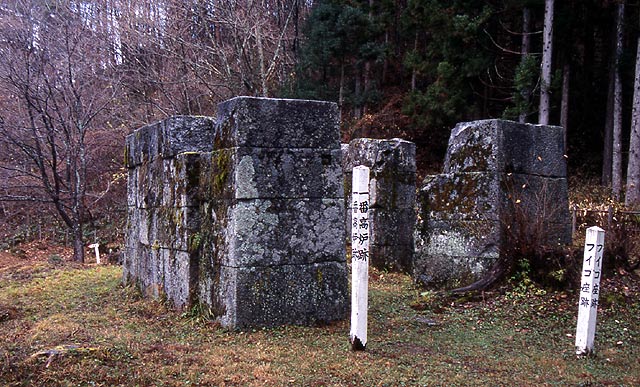
Hashino blast furnace trace
The history of the iron town, Kamaishi, begins when Ansei 4 years (1857) Oshima Takato (Oshi Makoto Kato) built Japan's first Western-style blast furnace in the Kamaishi Ohashi area.
In 1873, the Meiji government controlled iron mines located in Ohashi, Hashino, Sabiuchi and Kuribayashi, under the jurisdiction of the Ministry of Engineering, and in the following year, only Ohashi iron mountains became government-owned, and in 1875, Kamaishimura Suzuko (Suzuko, the current position of the Kamaishi Iron and Steel Works) has been designated as "the place, the construction site for Sakai and others." The government-owned Kamaishi Iron and Steel Works, which began construction in the same year, was built at a steelmaking plant (2 25 ton blast furnaces, 18.3 meters high) and a wrought iron plant, and started operation in 1880 (1880). However, the lack of fuel due to fire at the coal factory and poor quality coke (Coal dried at high temperature and volatile matter removed, but hard to ignite but fuel with strong thermal power and no smoke) was used in 18 The fire of the blast furnace disappeared in 1882), and the abandoned mountain was decided the next year.
In addition, 18 kilometers from Ohashi to the pier of Kamaishi Port and 5 kilometers from Ogawaguchi to Ogawa Charcoal Mountain will be constructed for transportation of iron ore and charcoal for fuel in the same year as the operation start, and operations will begin. did. This railway is Japan's third railway following Shinbashi-Shinagawa and Osaka-Kobe. However, with the abolition of the iron mill and mines in 1883, it became an abolished line.
